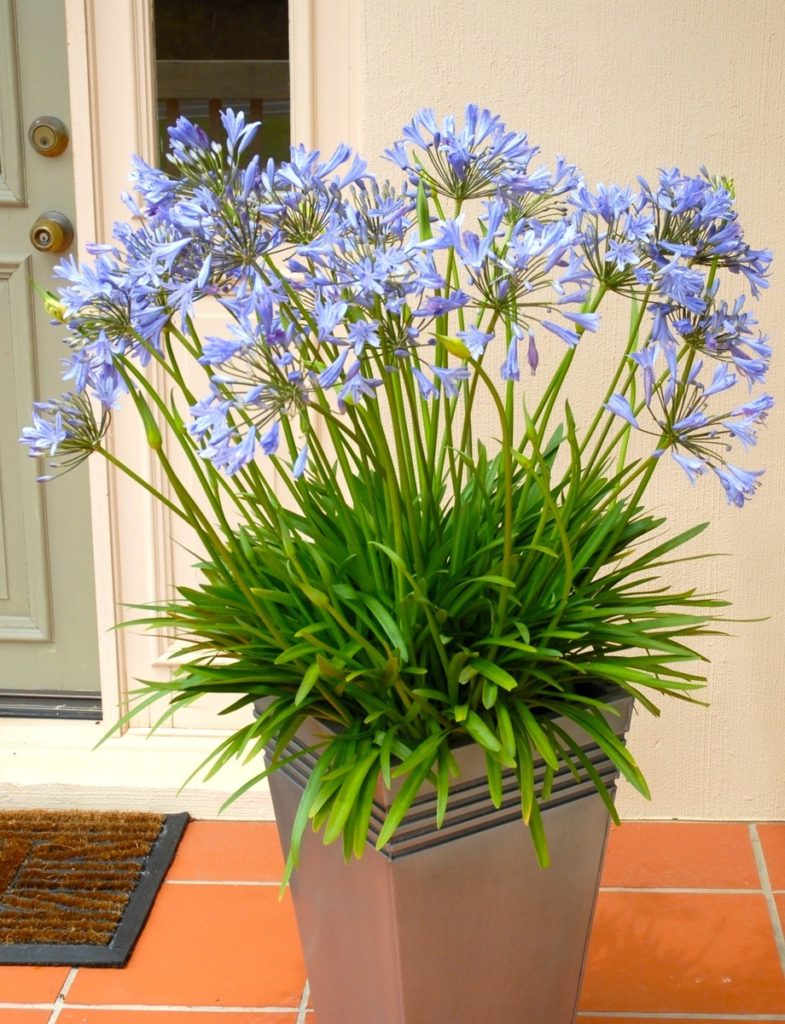
Blue Storm agapanthus works well in a container by itself or as a centerpiece. Photo courtesy Anthony Tesselaar Plants.
Every year, the Color Institute and Pantone declare the Color of the Year. This year it’s Classic Blue, a color that many already have in their garden. Salvia, aster and iris are just a few perennial that come in blue. Annuals, too, offer many blue selections, from angelonia to petunia.
Here are some favorites from the Holeman team.
David Gorden, FASLA and design manager
“Blue. The options are limited, but there are a few good things available,” he said. His favorites:
- Virginia bluebells (Mertensia virginica), “especially a carpet through a natural area,” he said. This native spring ephemeral sends up leaves, then a stalk of blue bell-like flowers. After a few weeks, the plants disappear. No clean up required. They readily spread by a slim seed about 1 inch long. Virginia bluebell does well in shade to part shade.
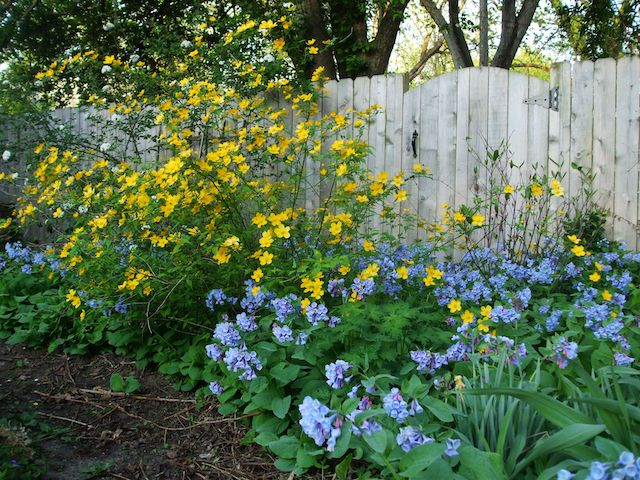
Virginia bluebells and Japanese kerria beautify the spring garden. (C) Photo Jo Ellen Meyers Sharp
- False indigo (Baptisia australis) is another native plant, this one with beautiful, blue flowers that dangle on tall stalks. Another attribute is the blue-green leaves. False indigo blooms in late spring to early summer. If there’s a draw back, David said, it’s a short bloom period. This perennial almost takes on a seasonal shrub like presence in the garden, reaching 3 to 4 feet tall and wide.
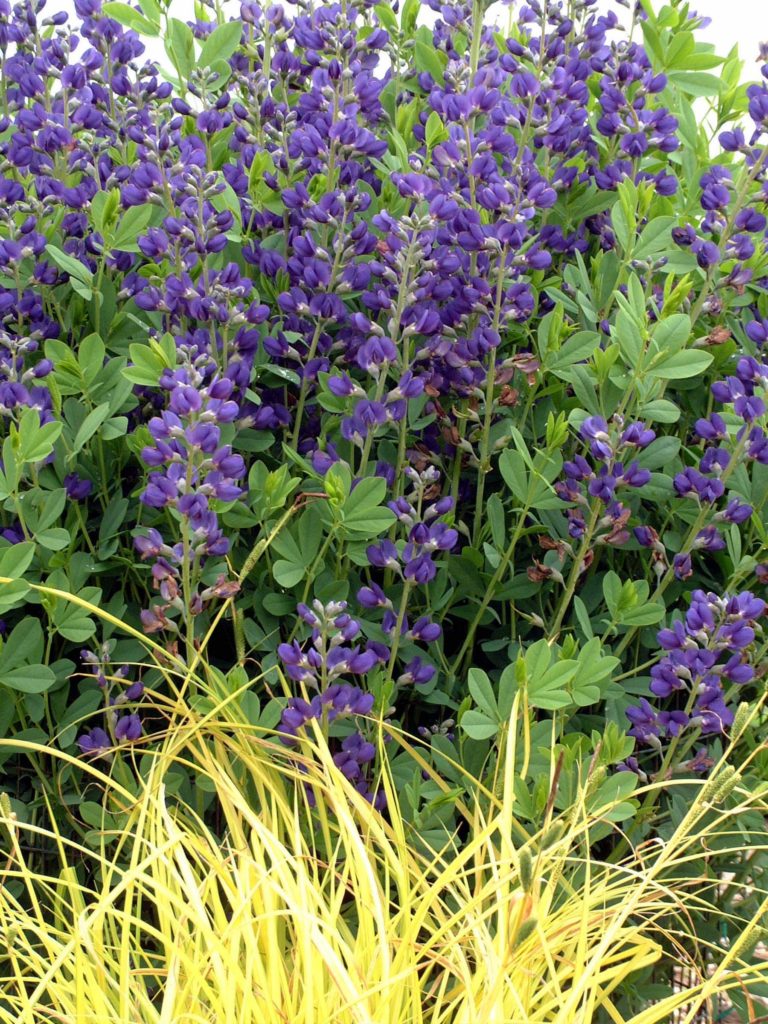
The native false indigo (Baptisia australis) blooms in late spring and early summer. Photo courtesy PerennialResource.com
- ‘Trevi Fountain’ lungwort (Pulmonaria) is another spring bloomer and a good companion perennial with daffodils, tulips and other bulbs. In spring, short stalks of round blue flowers mingle among the leaves. Slightly fuzzy, spotted green leaves “linger into winter,” David said. A good plant for shade, lungwort’s fuzzy leaves are resistant to slug damage.
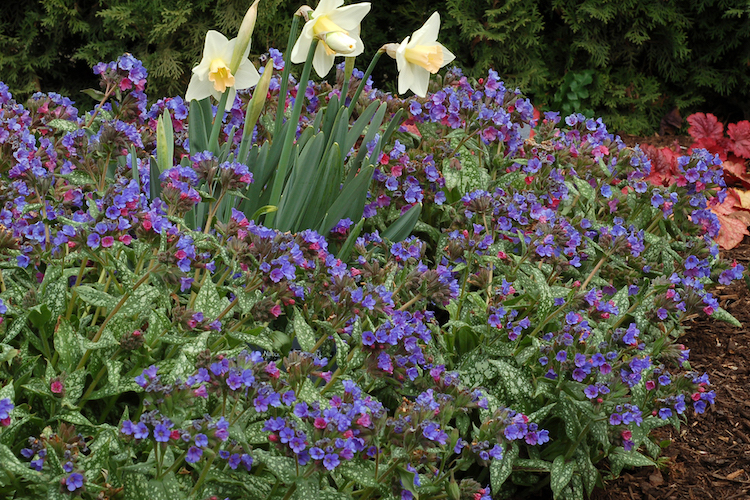
‘Trevi Fountain’ pulmonaria is a good companion with spring-blooming bulbs. Photo courtesy TerraNovaNurseries.com
Susan Messenger, maintenance supervisor
“Probably the easiest blue available is ‘Black & Bloom’ salvia,” said Susan, who also plants containers for Holeman’s clients.
- ‘Black & Blue’ salvia ( S. guaranitica) is popular with gardeners who like to attract hummingbirds, bees, butterflies and other pollinators. This sun-loving, summer annual – about 3 feet tall and wide – can be used in containers or landscape plantings.
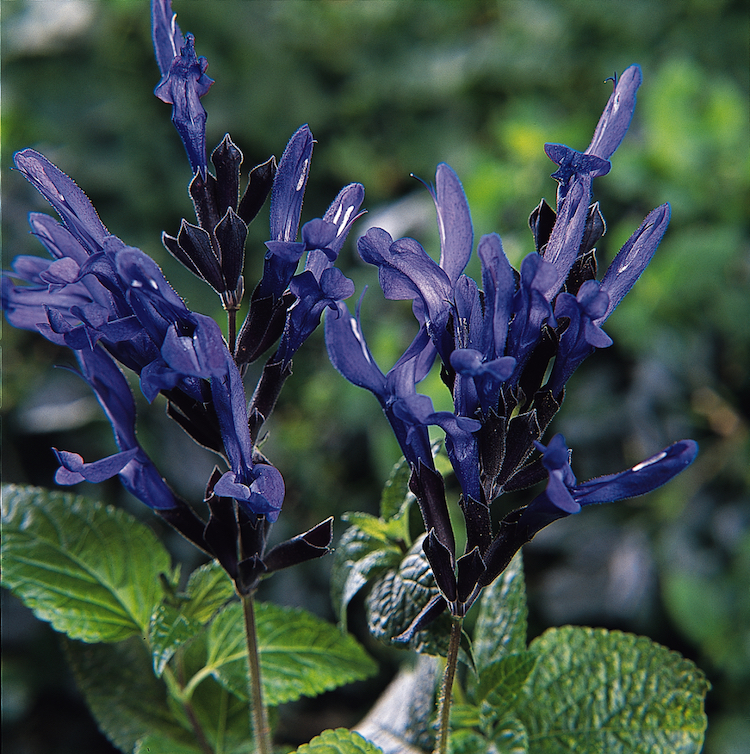
‘Black & Blue’ saliva can be planted in pots or in the ground. Photo courtesy BallHort.com
- For spring bulbs, Susan picks ‘Blue Jacket’ hyacinths (Hyacinthus orientalis). Grow these where you can enjoy their wonderful fragrance, or cut a few for indoor beauty.
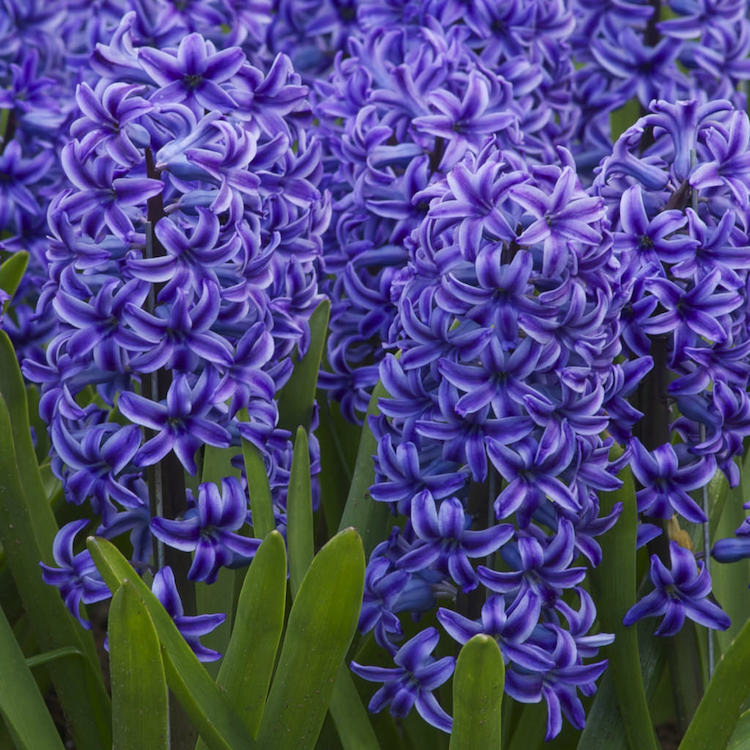
‘Blue Jacket’ hyacinth perfumes the spring garden. Photo courtesy Colorblends.com
- A summer bulb favorite is African blue lily (Agapanthus africanus), Susan said. Stalks with blue lily-like flowers emerge from green, strappy leaves. Agapanthus is native in South Africa, so it is grown in Indiana primarily as a summer annual. Some varieties of African blue lily are labeled as hardy, but they may not be a sure thing for winter hardiness.
- In the perennial groundcover category, Susan picks plumbago (Ceratostigma plumbago), a hardy plant with beautiful blue flowers in late summer. Paired with the blue blooms are leaves that are taking on their red fall color. Combined, it’s a lovely seasonal display.
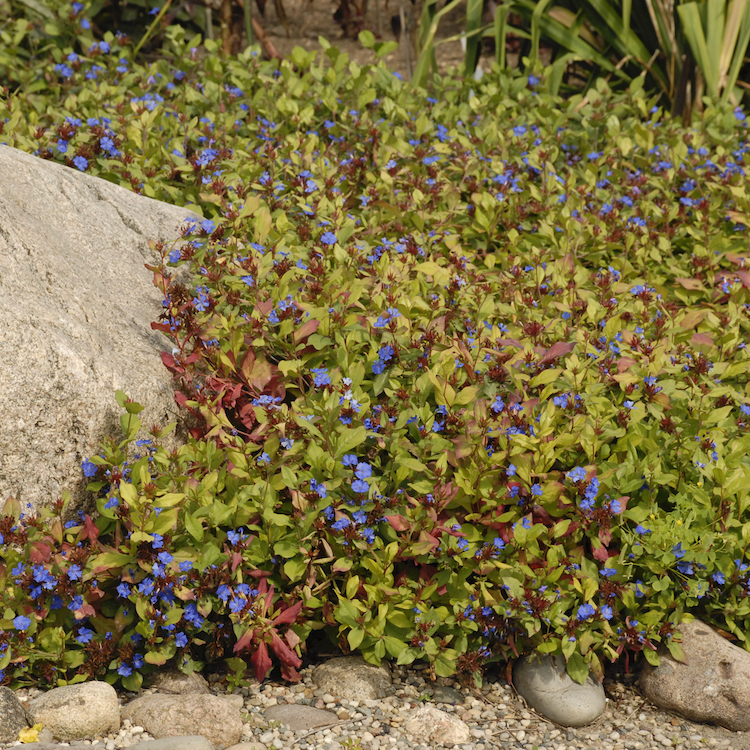
Leadwort or plumbago is a late summer blooming groundcover. Photo courtesy PerennialResource.com
